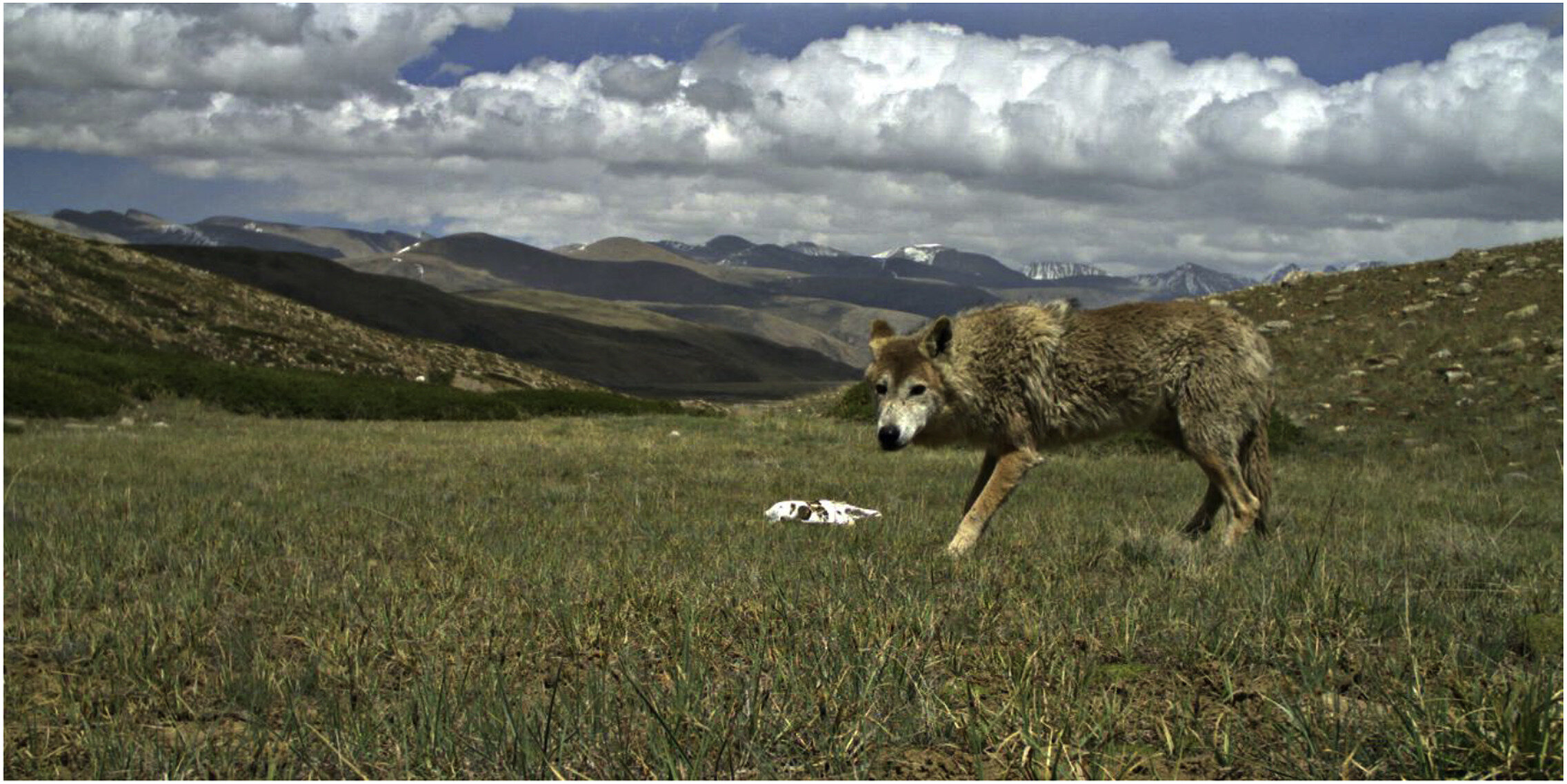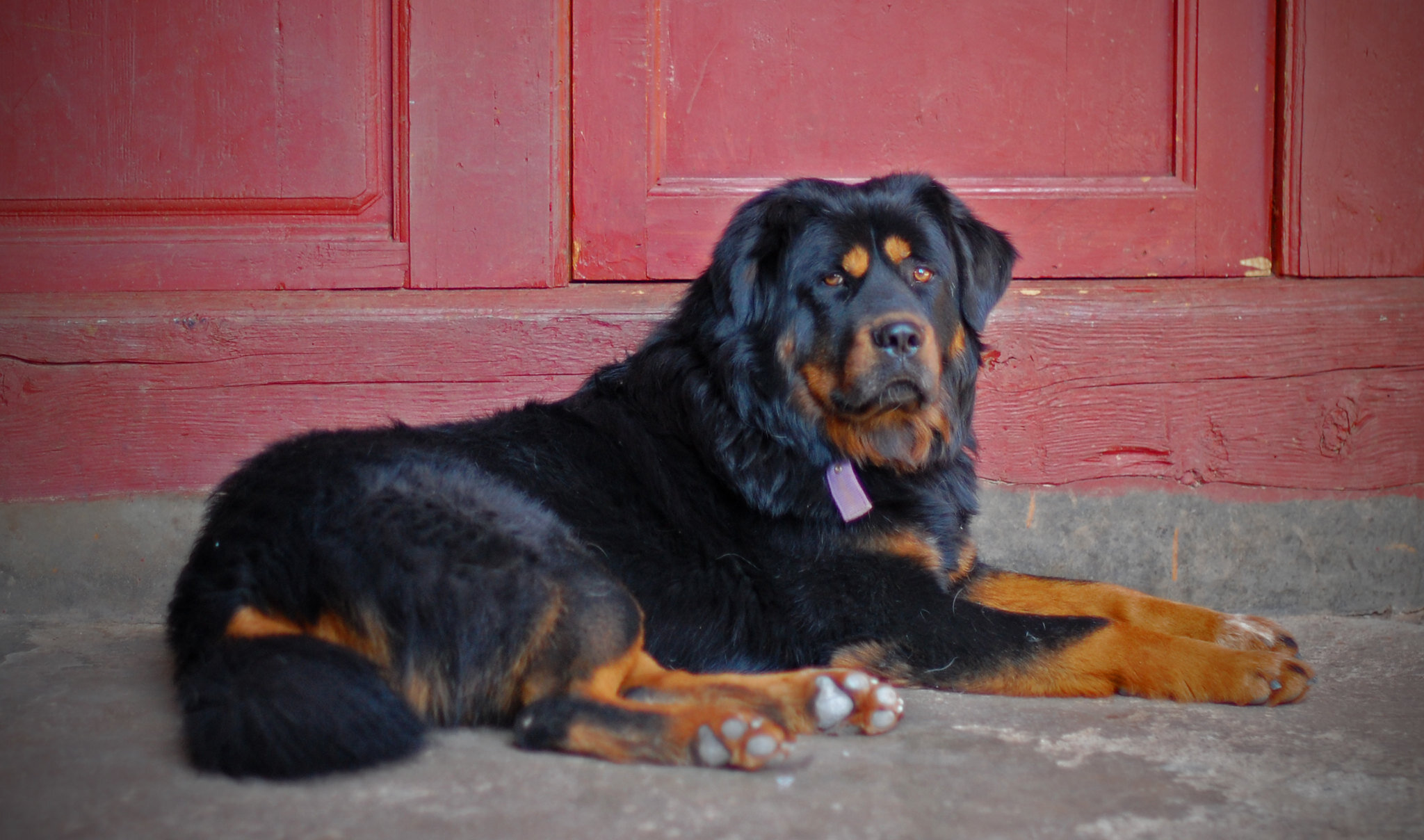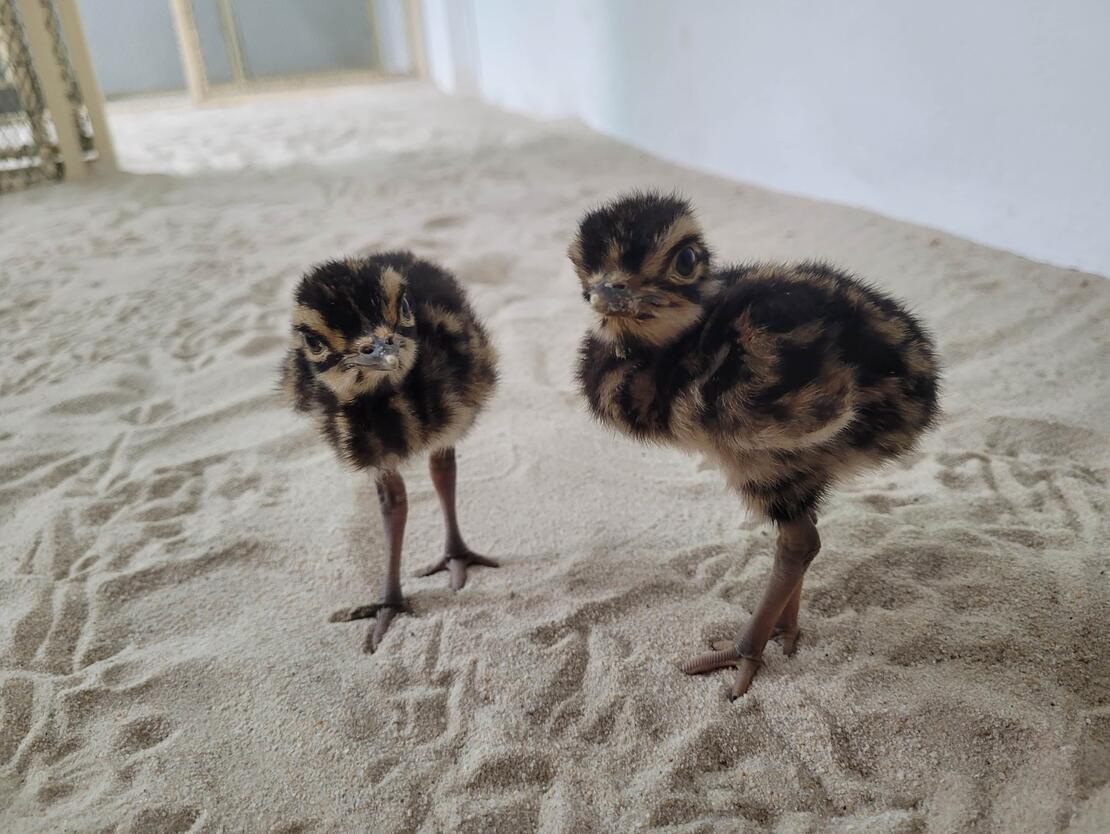PICTERED: A Himalayan wolf triggers one of Geraldine Werhahn’s camera traps
As high as 4,000 meters (20,000 feet) above sea level in some places, the Tibetan Plateau in China is one of the most challenging environments for any animal to exist in. The grey wolf (canis lupus) is completely capable of living in freezing conditions, but the thin air of the Tibetan Plateau in China, and the Himalayas in Northern India, China and Nepal, present the adaptable hunter with a new problem – a lack of available oxygen.
However a new paper published in the journal Global Ecology and Conservation reveals that the populations of the notoriously hard to identify grey wolf which live in the Himalayas have adapted to their mountain home to such a prominent degree that they should be re-classified as a genetically distinct species – canis lupus himalayensis – The Himalayan wolf.
As the paper details, the grey wolf is one of the hardest canids to identify and designate due to widespread historic ranges that have drastically changed since before, during, and after the last ice age, as well as historic and ongoing hybridization with seperate grey wolf lineages, including but not limited to the domesticated dog.
A classic example of this is the stalemate surrounding the mexican wolf and whether it is anything more than a grey wolf wearing different colors.
Samples were gathered non-invasively from scat and shed hair in China, Tajikistan, and Kyrgyzstan. The samples collected from the “stans” belonged to the Holarctic grey wolf, demonstrating how widespread wolves are on the asiatic continent.
Several parts of the genetic code from the Himalayan samples, such as in the hypoxia pathway, are radically different to other grey wolves nearby. These adaptations, like those found in other high-altitude Himalayan animals like the Tibetan gazelle or the Kiang, a relative of the horse, deal with elevated metabolism, oxidative stress, and hypoxia, allowing the wolf to live in places where there can be half as much available oxygen as at sea level.
Phantom of the Mountains
The white and brown coat of the Himalayan wolf allows it to blend in perfectly with its surroundings. And unlike grey wolves in other areas of China and India, the Himalayan wolf preys on all kinds of large mammals.
It likely diverged from the lineage of the Holarctic grey wolf more than 800,000 years ago – the oldest distinct wolf lineage on the planet.
Little is known about the newly-classified wolf species, and population estimates range from around 300 in Northern India, to several thousand in Nepal. The researchers, including Geraldine Werhahn at the Himalayan Wolf Project, a biologist specializing in carnivores and one of the world’s leading experts in the Himalayan wolf, recommend that since Nepal contains the largest populations, they should take the lead in conserving the species.
“…our results solidify the need to classify the Himalayan wolf as a taxon of special conservation concern,” writes Werhahn in her paper. She considers Nepal a good place to start establishing conservation practices since so much of the country is highly-inaccessible.
Additionally, Werhahn et al. hypothesize after finding high-altitude genes carried in the Himalayan wolf (but not the Holarctic grey wolf) present in domesticated Tibetan Mastiffs, the world’s most expensive dog breed perhaps acquired the adaptations to protect Tibetan herder’s livestock from wolves by way of interbreeding with the very animals they were bred by humans to defend against.
PICTURED: A Tibetan Mastiff outside a Chinese hostel. Photo credit Tim Quijano, CC 2.0




